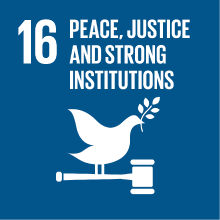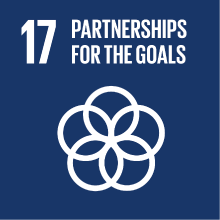HISTORY OF BUDDHISM
- Academic year
- 2020/2021 Syllabus of previous years
- Official course title
- STORIA DEL BUDDHISMO
- Course code
- LT2950 (AF:333409 AR:181400)
- Modality
- On campus classes
- ECTS credits
- 6
- Degree level
- Bachelor's Degree Programme
- Educational sector code
- L-OR/20
- Period
- 2nd Semester
- Course year
- 1
- Where
- VENEZIA
- Moodle
- Go to Moodle page
Contribution of the course to the overall degree programme goals
By the end of this course a typical student should be able to do most of the following:
Locate the origins of Buddhism of South-East Asia in its socio-religious context;
• Outline the spread of Buddhism in South-East Asia;
• Explain the fundamental concepts of Buddhism and relate these to the practices;
• Describe its main scriptural authorities;
• Identify a range of motivations underlying ordination and the relation between monasteries and Buddhist societies;
• Discuss some of the above with reference to relevant primary and secondary sources.
The course is an elective for the BA in Languages, Cultures and Societies of Asia and North Africa.
Expected learning outcomes
1. Have gained a good knowledge and critical understanding of the main topics concerning the cultural history of early Buddhism in South-East Asia;
2. Have gained an understanding of the continuities and discontinuities between the main schools of early Buddhism;
3. Be able to find and use critically a range of materials including books, journals, primary sources, and web-based resources relevant to the topics studied in the course.
4. Write a sustained argumentative essay on the basis of their study of the bibliography of the course.
Pre-requirements
Contents
The course will develop along the following lines:
1) Geography and general chronology (Introduction)
2) The East Indian coastal dynastic powers: from the Sathavanas to Medieval times
2a) Focus on the eastern Indian emporia, beyond Arikamedu
1a) Settlements and sites of Early Buddhism
3) Historic Buddhism: schools
3a) How to read Buddhist art (see LT2950 South Asia)
4) Historic Buddhism: centres (survey course on major case studies)
4a) Odisha art, architecture, epigraphy and texts (see LT2950 South Asia)
4b) Tamil Nadu, sites, architecture, epigraphy and texts
4c) Sri Lanka, sites architecture, epigraphy and texts (see LT2950 South Asia)
4c.1) The excavations at Tissamaharama
5) The Indosphere: the maritime power of Indian dynasties
5a) Java, from Shailendra to Srivijaya dynasties, architecture, epigraphy and texts
5a.1) Case study: Borobudur
5b) Buddhist Khmer cultural sphere, architecture, epigraphy and texts
5b.1) Case study: Yashodarapura -Angkor
5c) Buddhist Thai cultural world, architecture, epigraphy and texts
5c.1) Case study: Ayutthaya, Sukhothai, Wat Pho
5d) Burma: From Piyu to Pagan dynasty
5d.1) Case study: from Sri Ksetra to Mingalazedi
6) Geography the travel accounts of Yijing (Epilogue)
7) Beyond the Indosphere: a projection towards China, Korea and Japan (seminars)
Referral texts
R. Gethin, The Foundation of Buddhism (selected chapters). Oxford University Press 1998
H. P. Ray, Monastery and Guild. Commerce under the Satavahanas (selected chapters). Oxford University Press 1986
J. Miksic and G.G. Yian, Ancient South East Asia (selected chapters). Routledge 2017
P. Skilling, Buddhism and Buddhist Literature of South-East Asia: Selected Papers by Peter Skilling. Materials for the Study of the Tripiṭaka Volume 5 (capitoli scelti). Fragile Palm Leaves 2009
J. Guy, Lost Kingdoms: Hindu-Buddhist Sculpture of Early Southeast Asia. The Metropolitan Museum of Art 2014
Other possible readings from Bandaranayake, S., Sinhalese Monastic Architecture - The Viharas of Anuradhapura, Leiden 1974; S.J. Tambiah, World Conqueror and World Renouncer : A Study of Buddhism and Polity in Thailand against a Historical Background (Cambridge Studies in Social and Cultural Anthropology). Cambridge University Press, 1976; Id. The Buddhist Saints of the Forest and the Cult of Amulets. Cambridge University Press, 1984.
Handouts on sites, architecture and monuments will be available on Moodle.
A selection of texts and epigraphic material will be available on Moodle.
Assessment methods
Before the exam, the candidate will present a short (about 3000 words) research essay on a topic selected by the candidate that references and cites the texts we have studied. Students are encouraged to work on the paper beforehand but cannot use their notes during the exam.
Type of exam
Teaching methods
Teaching language
Further information
2030 Agenda for Sustainable Development Goals
This subject deals with topics related to the macro-area "International cooperation" and contributes to the achievement of one or more goals of U. N. Agenda for Sustainable Development


